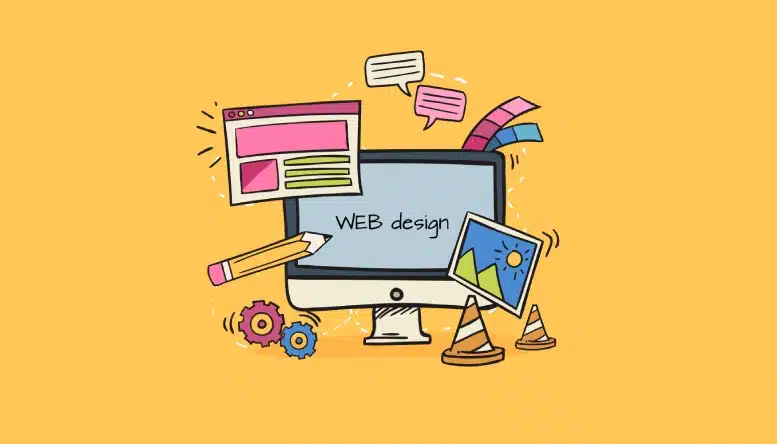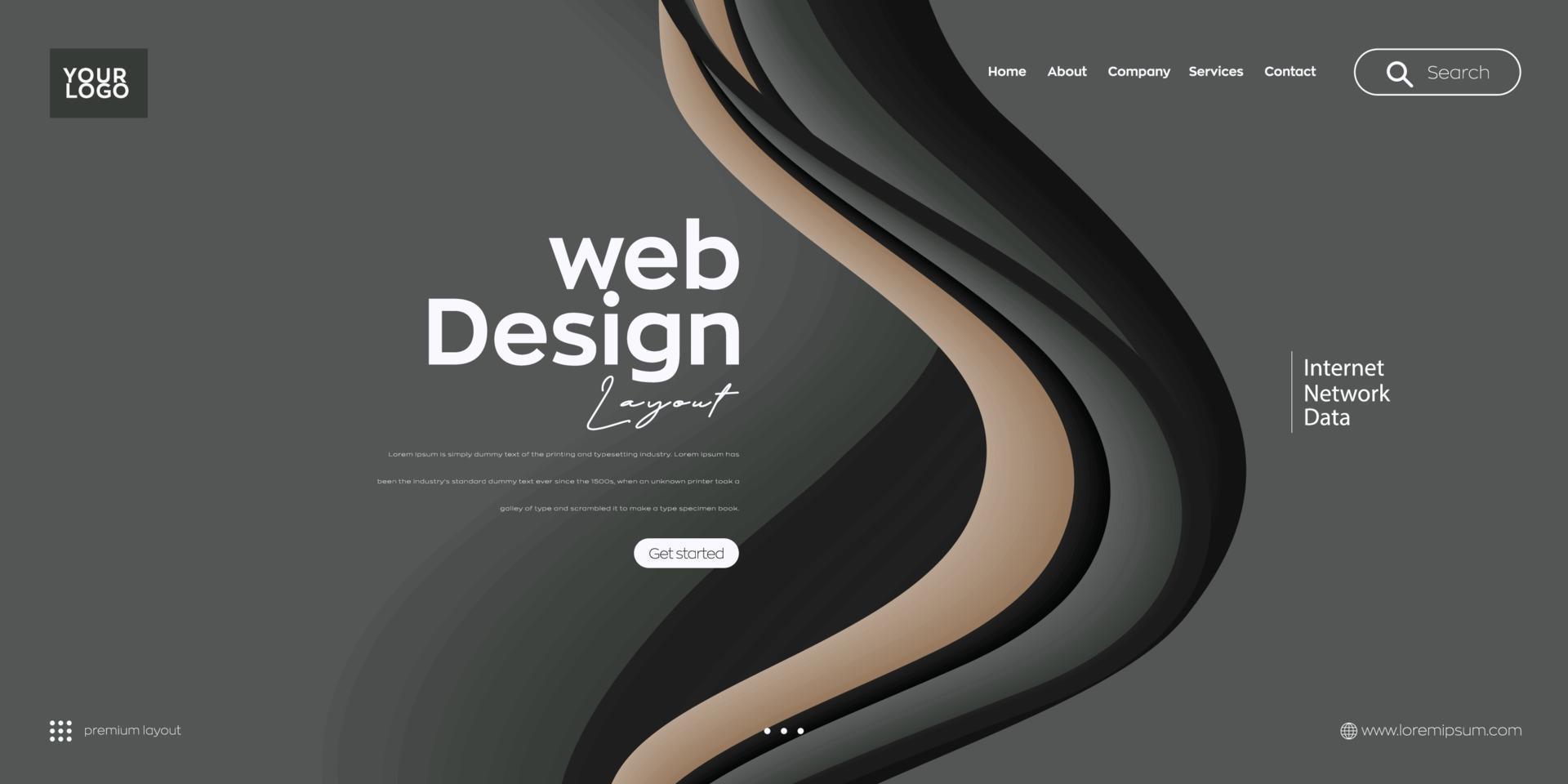The Best Kinds of Website Design to Enhance Customer Experience and Engagement
In the ever-evolving landscape of digital communication, the efficiency of website design significantly affects user experience and interaction. Numerous style methods, such as minimal, responsive, and interactive formats, each offer unique benefits that can satisfy varied user demands. Understanding which sorts of Web layout best offer these objectives can be essential for companies aiming to boost client contentment and retention. The inquiry remains: which style components truly reverberate with customers and foster purposeful engagement? The expedition of these principles discloses vital understandings that may redefine your method to Web style.
Minimal Website Design
As electronic landscapes end up being progressively messy, minimalist website design has actually arised as an effective technique to boosting individual experience. This style viewpoint prioritizes simplicity, concentrating on essential components while removing unneeded interruptions. By utilizing ample white room, uncomplicated navigating, and a restricted color scheme, minimal style promotes clarity and directs user focus to vital material.
The core principle of minimalist website design is to produce a seamless interaction for users. By lowering cognitive lots, individuals can swiftly realize info without feeling bewildered. This direct strategy not only improves usability but likewise motivates interaction, as site visitors are much more likely to discover a site that is easy and aesthetically appealing to navigate.
Furthermore, minimal style frequently highlights typography and images, using these aspects tactically to share messages effectively. In essence, minimal Web layout is not simply a trend; it is a thoughtful technique that acknowledges the importance of user-centered layout.
Receptive Website Design
In today's diverse electronic setting, responsive Web layout has actually come to be vital for producing a seamless customer experience across a plethora of gadgets. As individuals access internet sites on smart devices, desktops, tablet computers, and laptop computers, the capacity of an internet site to adjust its design and web content to various screen dimensions and resolutions is essential.
Receptive Web layout uses flexible grids, images, and CSS media queries to ensure that Web content exists ideally, regardless of the tool used. This approach not just improves the aesthetic charm of a website however also dramatically improves use. Individuals are most likely to involve with a site that supplies a constant experience, as it eliminates the aggravation of having to zoom in or scroll exceedingly.
Moreover, internet search engine, including Google, prioritize mobile-friendly sites in search positions. By adopting receptive layout, services can boost their exposure and get to a broader target market. This method likewise simplifies site maintenance, as a single variation of the site can deal with all gadgets, lowering the need for multiple variations. In recap, receptive website design is a basic technique that boosts user experience, interaction, and general fulfillment.
Interactive Web Style
Receptive website design prepares for enhancing user experience, however interactive Web style takes this an action further by engaging users in an extra dynamic way - Aligned Position Web Design. By integrating aspects such as computer animations, clickable prototypes, and real-time feedback, interactive Web style imp source mesmerizes individuals, attracting them right into a richer surfing experience
This approach not only fosters interaction however likewise urges customers to discover material proactively as opposed to passively eating it. Techniques such as gamification, where users earn rewards for completing tasks, can considerably improve the moment invested on a site and enhance general fulfillment. Interactive features can streamline intricate details, making it a lot more absorbable and pleasurable.

Incorporating interactive style components can also bring about higher conversion prices, as customers are more likely to involve with a website that actively includes them. Aligned Position Web Design. Eventually, interactive Web style changes user experiences into unforgettable journeys, making certain that site visitors return time after time
Apartment Design
Characterized by its minimalistic method, flat style highlights simplicity and performance, removing unnecessary aspects and concentrating on crucial attributes. This layout philosophy focuses on use, ensuring that users can browse user interfaces effortlessly and performance. By using a tidy visual, flat design removes the mess commonly located in a lot more elaborate designs, therefore enhancing customer emphasis on web content and performance.
The hallmark of level layout exists in its use of strong shades, basic typography, and geometric shapes. These elements add to an aesthetically enticing user interface that is both contemporary and approachable. Furthermore, flat style promotes a sense of clearness, enabling users to discern essential activities and details without diversion.
Moreover, flat layout is why not try here especially efficient in responsive website design, as its simplicity converts well throughout various tools and screen dimensions. The absence of intricate appearances and gradients decreases filling times, which is vital for preserving customer interaction. As electronic landscapes remain to develop, level design continues to be an appropriate selection for creating straightforward sites that boost overall experience. By concentrating on important attributes, flat layout not just fulfills individual demands but likewise encourages seamless communication, making it an important part of effective website design techniques.
Flexible Website Design
Adaptive website design personalizes the individual experience by producing multiple repaired designs customized to various screen dimensions and tools. Unlike receptive layout, which fluidly readjusts a solitary format, flexible layout uses distinctive formats for specific breakpoints, ensuring optimal presentation on different platforms. This technique enables designers to concentrate on the special features of each tool, boosting functionality by providing precisely what individuals need based on their context.
One of the primary benefits of flexible website design is its capability to optimize load times and efficiency. By offering tailored content and images that fit the customer's tool, internet sites can lessen data usage and improve loading rates. This is specifically advantageous for users with slower links or minimal data plans.

Furthermore, adaptive style facilitates a much more constant and controlled branding experience. Given that developers develop numerous designs, they can make certain that the visual aspects straighten with the brand's identity throughout various platforms - Aligned Position Web Design. This leads to a natural customer experience, enhancing interaction and advertising customer retention
Conclusion
Finally, the combination of minimalist, receptive, and interactive website design concepts significantly improves individual experience and involvement. Minimal design promotes clearness and emphasis, while receptive layout ensures adaptability across different gadgets, advertising access. Interactive design captivates individuals with dynamic aspects, motivating expedition and customization. Jointly, these style comes close to add to the production of straightforward environments that not only improve complete satisfaction why not try these out however likewise drive higher conversion prices, emphasizing their critical importance in contemporary Web layout approaches.

Minimalist style promotes clarity and emphasis, while responsive style makes sure flexibility throughout numerous tools, promoting ease of access. Jointly, these design comes close to contribute to the production of straightforward settings that not just enhance complete satisfaction yet also drive higher conversion rates, highlighting their essential relevance in modern Web style approaches.